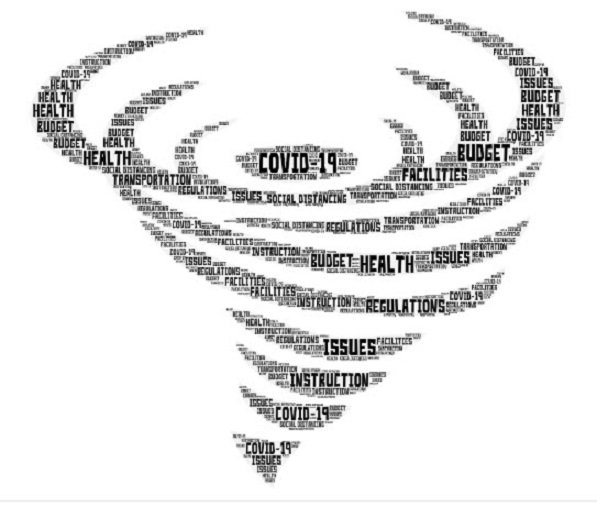
Have you ever wondered how Dorothy managed all the issues and concerns she encountered with the Wicked Witch of the West in the Wizard of Oz movie and actually made it to the Emerald City? She and her cohort of the Scarecrow, the Cowardly Lion and the Tinman essentially had a yellow brick “road map” to get them there. The yellow brick road map that will help you successfully reopen schools is a tool called Situation Appraisal or SCAN.
Recommendations, Issues, and Guidelines, OH MY!
By now, your district is deep into gaining understanding and dealing with your CDC, State and local guidelines on opening school this Fall and trying to figure out your own road map or “yellow brick road” to safely reopen schools. In fact, sticking with our analogy, we are facing a tornado of issues, worries, concerns, and yes maybe for those of you who are positive thinkers………opportunities. So how do you deal with this chaos and in a logical thoughtful way make sense of everything and deal with the most important issues one at a time?
Road Map: Situation Appraisal
The road map we would choose is Situation Appraisal. This tool is a systematic, logical strategy for identifying the issues, clarifying these issues, prioritizing them and finally putting together a solid action plan that describes in detail who does what and when. When you use SCAN to address the issues and concerns about going back to school, you will have the confidence that you, your colleagues and district have used a collaborative and comprehensive approach to manage the return of your students using four simple steps.
Just SCAN It – Step 1 > See the issues
We use the acronym SCAN to delineate each step. The first step, See the issues is as simple as pulling out a piece of paper, opening a shared doc or setting up a flip chart and asking stakeholders, “What concerns me/us about going back to school in the Fall?” You will be surprised a how quickly you think of things that are lurking out there. And then to keep the thinking going, a simple “What else” will make your list grow. The key to this brainstorming step is to list the issues, concerns and opportunities with out discussion. Just get them out and visible. See the example below:
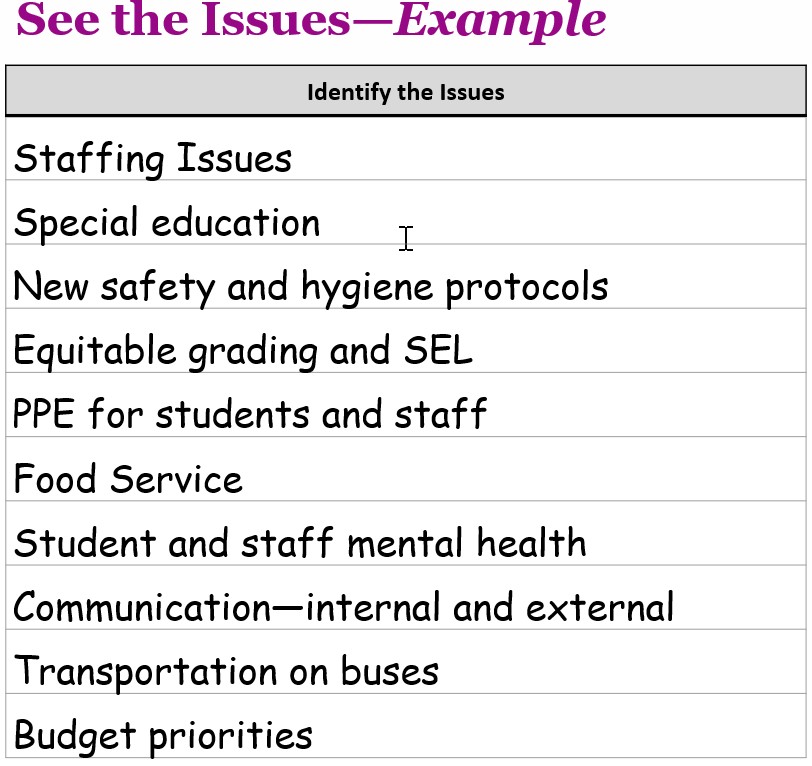
Just SCAN It – Step 2 > Clarify the issues
In this step we take each of the issues generated in Step1 one at a time. I typically look at the list of issues and pick the one that I know a lot about or just ask the group which issue they want to work on first with. For this example, we will just look at the issue of “staffing.” Once that broad issue is identified you spend time understanding what this issue means to everyone. To start, you can go back to the person who added the issue and ask “What do you mean by…” You can also ask the group “what is important about this issue” or “what concerns me/us about this issue.” You record each clarification. As you do this you may see one very broad issue turn into several clarified sub issues. You will do this step for every broad issue you have identified. Below is an example of this clarification work on just the broad concern, “Staffing Issues”.
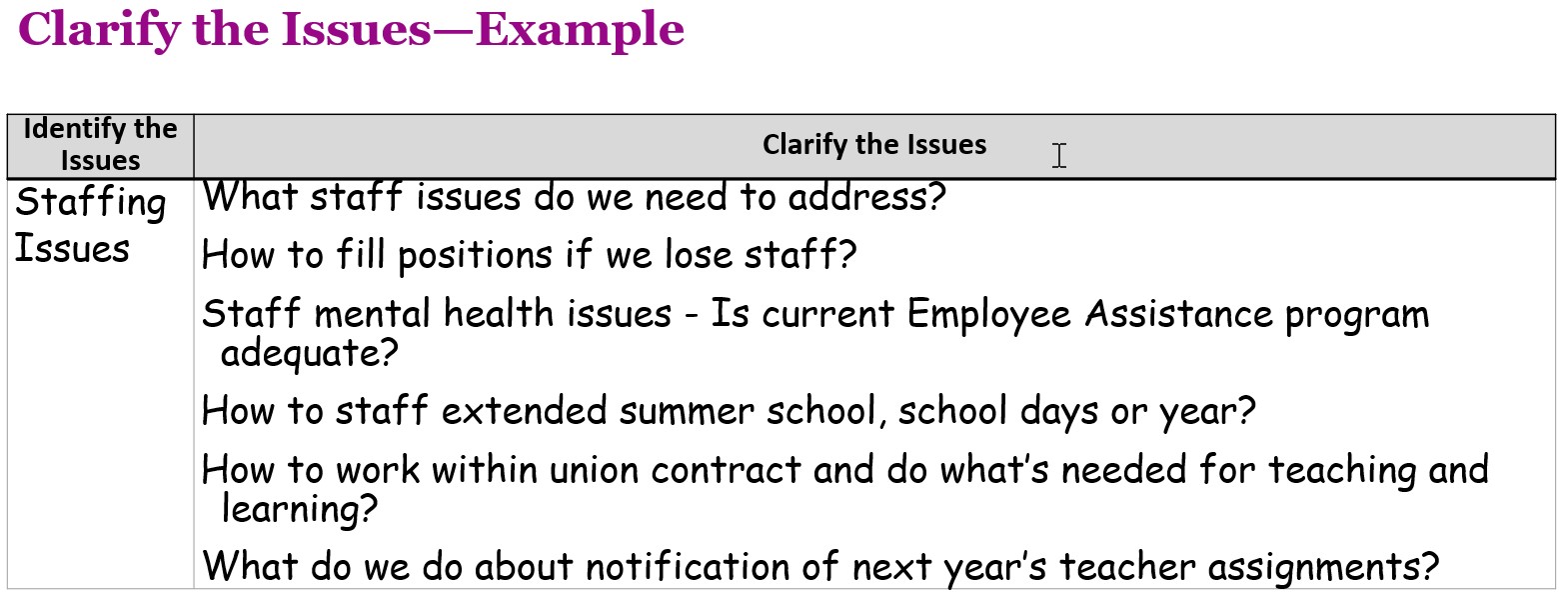
Just SCAN It – Step 3 > Assess the issues
Now that you have all your issues clarified the question becomes, which ones do we work on first. Which of these many issues are the highest priorities? We teach that you SUG each issue. This means for each clarified issue you determine the Seriousness, the Urgency and the Growth potential. In each dimension you use a scale of H,M,L. This is a very robust and sometimes time-consuming way to set priority. In some cases we use a faster way which is only consider Urgency and set that dimensions priority with H,M,L. Below is priority setting for the clarified “Staffing Issues”.
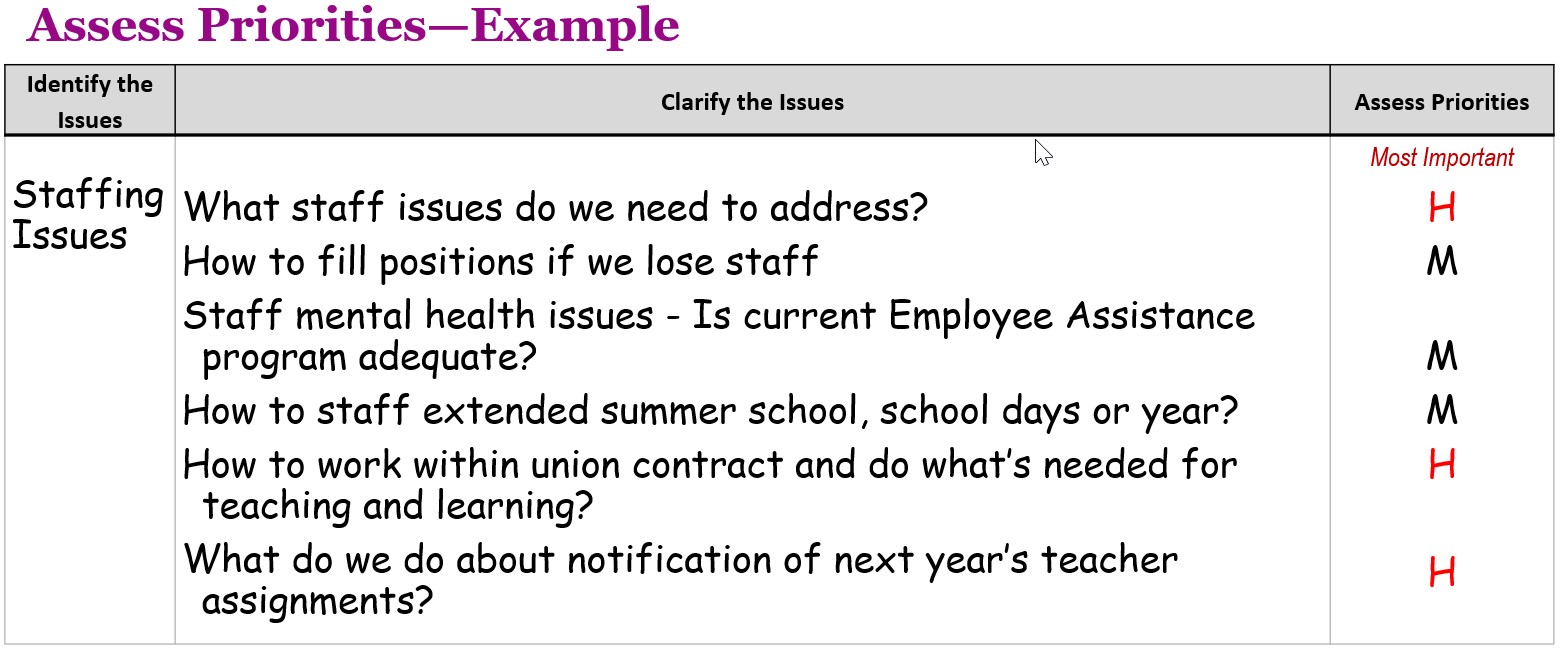
Just SCAN It – Step 4 > Name the next steps
The fourth and final step is setting up your action plan. This encompasses a brief description of what is going to be done to address the issue, who owns these actions and when will they get the action(s) done in calendar time. We recommend you do start by doing an action plan for all H issues. Then if you have time and/or enough help you can do action planning for the M issues. An example is below.
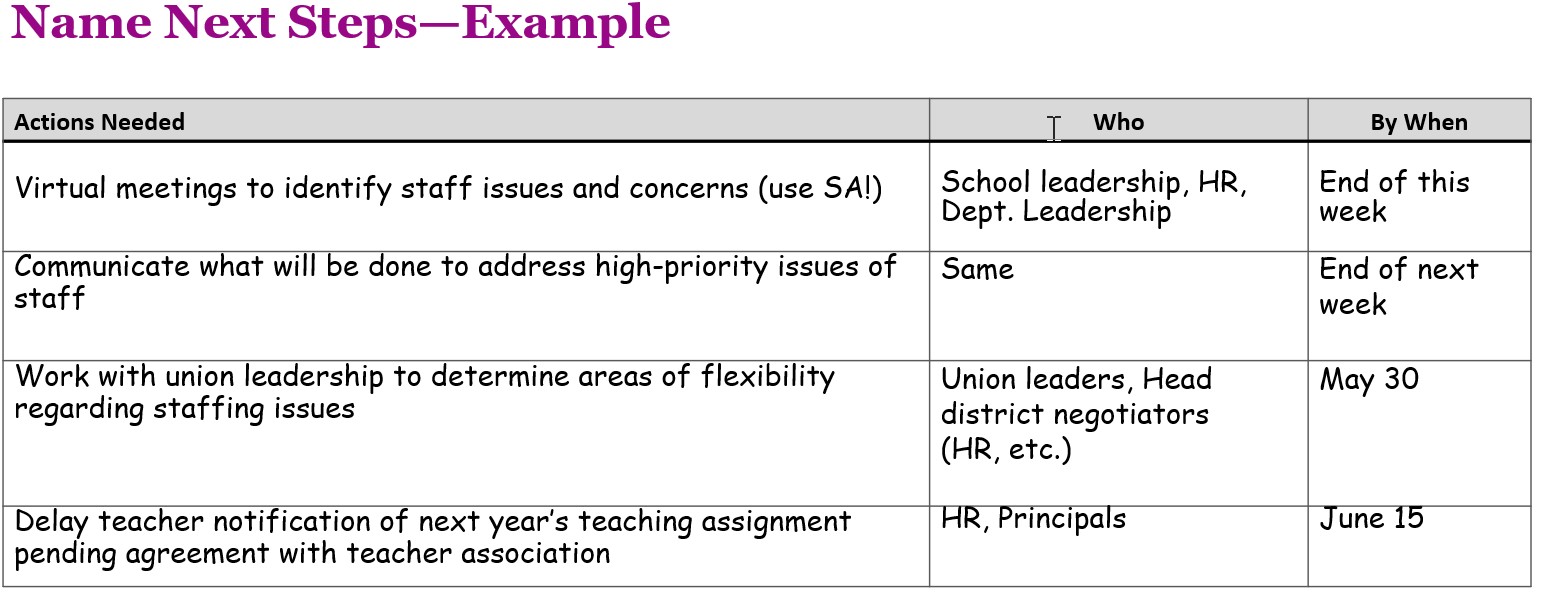
Many Benefits
This fairly simple and straightforward strategy can help you deal with the any complex situations that arise district-wide. Using this road map can help make your thinking visible, ensure that all concerns are heard and considered, prioritize activities to use your time and resources wisely and help you generate a coherent plan with accountability built in. Using SCAN can help you be well on your way to moving down the yellow brick road to a successful re-entry and getting back to school.